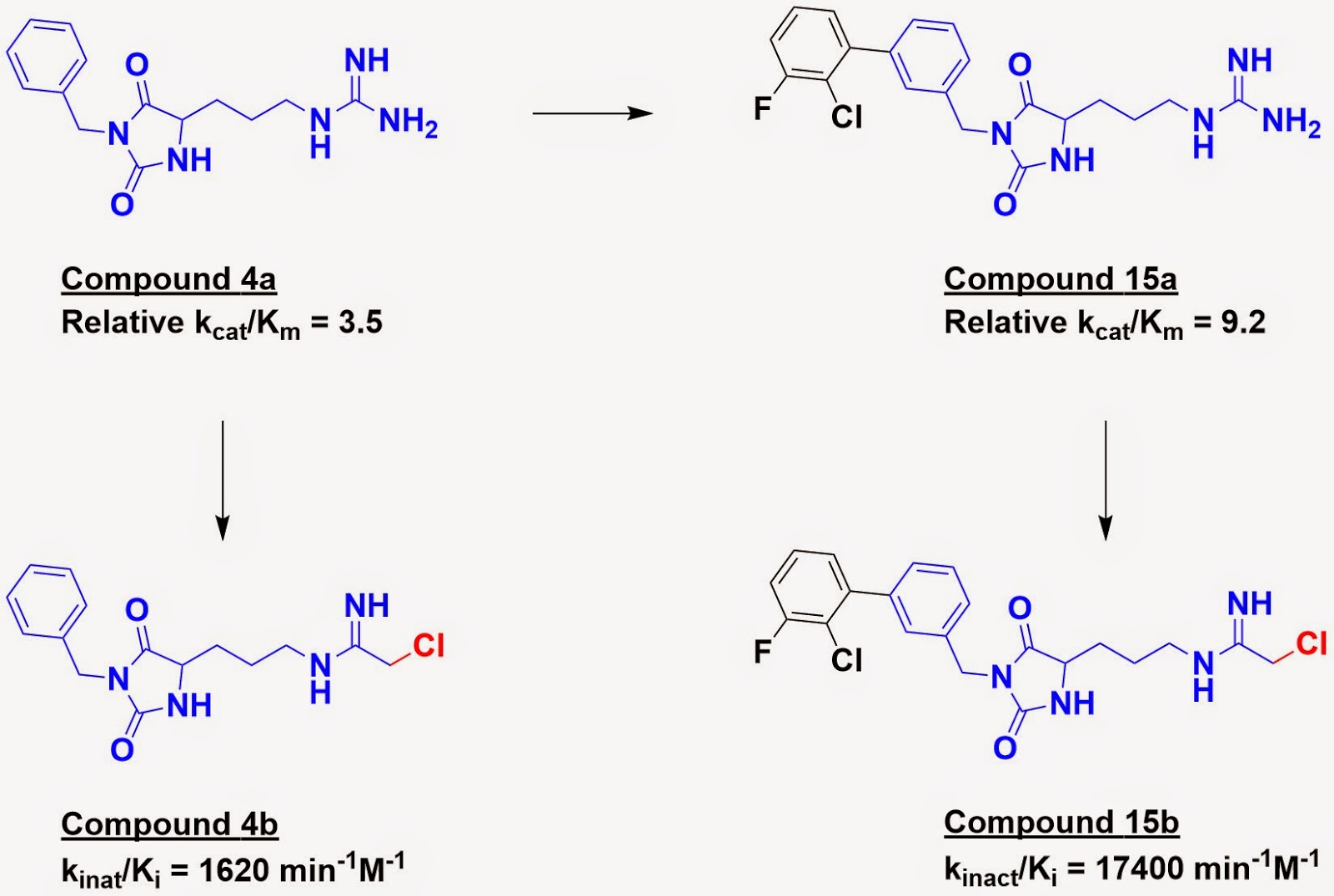Last week marked the tenth anniversary of CHI’s three-day
Drug Discovery Chemistry conference in San Diego. The conference consists of
six tracks, with three happening simultaneously. The FBDD track is the only one
which dates all the way back to the beginning in 2006. In fact, this is the
oldest recurring fragment conference, predating both the Royal Society
Fragments
meetings as well as the independent
FBLD meetings.
It’s worth reflecting on how far fragments have come since
2006. Back then, as Rod Hubbard (Vernalis and University of York) noted, most
of the talks were prospective and methodological. Even as late as
2010 there
were talks describing how dedicated fragment groups needed to be shielded from
the larger organization. Now fragments are mainstream: a large fraction of the talks
in the protein-protein interaction track involved fragments, as did both
plenary keynote addresses to the entire conference.
Harren Jhoti’s keynote focused on lessons learned at Astex
over the past 15 years. There has been some
debate in the literature over
ligand efficiency (
LE), and one slide that struck me was a summary of 782
dissociation constants (measured by
ITC) against 20 projects. The vast majority
of these compounds had LE > 0.3 kcal/mol/atom. Given that Astex has put
multiple fragment-derived drugs
into the clinic and was
acquired by Otsuka in
one of the largest M&A events of 2013, the metric appears to have some utility.
Still, it’s important not to be dogmatic, particularly for
difficult targets. Harren described a program for
XIAP/cIAP where they started
with an extremely weak fragment with LE < 0.2, but its binding mode was
sufficiently interesting that they were willing to work on it. This program
also revealed the importance of biophysical measurements, as functional
activity was uninterpretable and even misleading until higher affinity compounds
were discovered.
One theme throughout the conference was the observation that
fragments bind at multiple sites on proteins. Harren noted that Astex
researchers have found fragments bound (crystallographically) to 54 sites on 25
targets – an average of 2.2 sites per target. Some targets are even more
site-rich: Joe Patel (AstraZeneca) performed a crystallographic screen on a
complex of Ras and SOS and found four binding sites, including one previously discussed
here. In this effort, 1200 fragments were screened in pools of 4, and in
one case two fragments from the same pool each bound only when they were both
present at the same time – each fragment alone showed no binding by NMR or
crystallography.
Troy Messick (Wistar) described his work against the EBNA1
protein from Epstein-Barr virus. An HTS screen of 600,000 compounds came up
with at best marginal hits, but soaking 100 different Maybridge fragments into protein
crystals led to 20 structures, with fragments bound to four different sites.
Some of these fragments were then merged to give cell-active compounds with
good oral bioavailability.
Rather than exploring different ligands binding at different
sites, Ravi Kurumbail (Pfizer) described an interesting case of the same ligand
binding at different sites. A screen against the kinase ITK identified a
(large) fragment that could bind both in the adenine binding pocket as well as
a nearby pocket, as determined crystallographically. Determining the affinities
of the same fragment for the two sites necessitated some clever SPR and
enzymology, but did lead to a highly selective series.
In terms of targets, BCL-family proteins were certainly
well-represented, featuring heavily in talks by Chudi Ndubaku (Genentech,
selective Bcl-xL inhibitors), Mike Serrano-Wu (Broad Institute,
MCL-1 inhibitors), Zaneta Nikolovska-Coleska (University of Michigan, MCL-1),
Roman Manetsch (Northeastern,
Bcl-xL and MCL-1), and Andrew Petros
(AbbVie,
BCL-2 and
MCL-1). Of course, it was AbbVie (neé Abbott) that pioneered
BCL inhibitors as well as FBLD in general, and I was happy to hear that there
is a renaissance occurring there, with fragment approaches being applied to all
targets, even those undergoing HTS.
Finally, there were some interesting practical lessons on
library design. Peter Kutchukian described how the
Merck fragment library was
rebuilt to incorporate more attractive molecules that chemists would be excited
to pursue. There is an ongoing debate as to whether a fragment library should
be maximally diverse or contain related compounds to provide some SAR directly
out of the screen, and in the case of the Merck library the decision was to
target roughly five analogs in the primary library, with a secondary set of
available fragments for follow-up studies.
The utility of having related fragments in a library was
illustrated in a talk by Mark Hixon (Takeda) about their
COMT program. A HTS
screen had failed, and even a screen of 11,000 fragments came up with only 3
hits (with an additional close analog found by catalog screening). Remarkably,
all of these are extremely closely related, but other analogs in the library
didn’t show up; had they not had multiple representatives of this chemotype in
their library they would have come up empty-handed.
In the interest of space I’ll close here. Teddy will
post his thoughts later this week, and please share your own. CHI has announced
that next year’s meeting will be held in San Diego the week of April 19. And
there are still
several great events on the calendar for this year!







